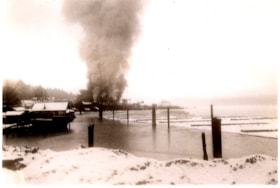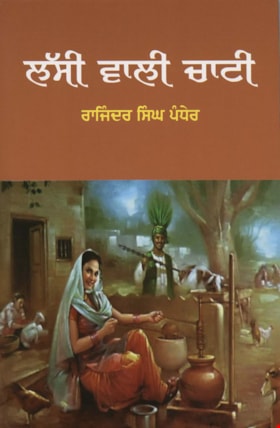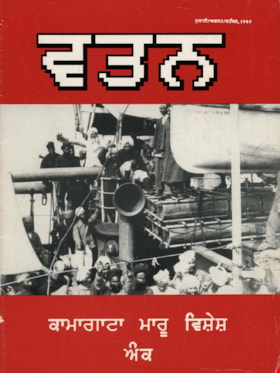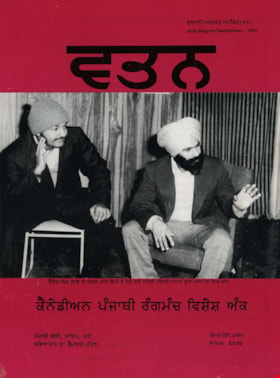More like 'Farm workers'
Narrow Results By
Decade
- 2020s 69
- 2010s 67
- 2000s 845
- 1990s 402
- 1980s 250
- 1970s 552
- 1960s 314
- 1950s 334
- 1940s 399
- 1930s 278
- 1920s 297
- 1910s 257
- 1900s 140
- 1890s 35
- 1880s 6
- 1870s 4
- 1860s 3
- 1850s 1
- 1840s 1
- 1830s 2
- 1820s 1
- 1810s 1
- 1800s 1
- 1790s 1
- 1780s 1
- 1770s 1
- 1760s 1
- 1750s 1
- 1740s 1
- 1730s 1
- 1720s 1
- 1710s 1
- 1700s 1
- 1690s 1
- 1680s 1
- 1670s 1
- 1660s 1
- 1650s 1
- 1640s 1
- 1630s 1
- 1620s 1
- 1610s 1
- 1600s 1
Subject
- Academic Disciplines 1
- Accidents 5
- Accidents - Automobile Accidents 11
- Adornment 7
- Adornment - Jewelry 3
- Adornment - Lapel Pins 7
- Advertising Medium 7
- Advertising Medium - Poster 1
- Advertising Medium - Signs and Signboards 16
- Aerial Photographs 1
- Agricultural Tools and Equipment 29
- Agricultural Tools and Equipment - Cultivators 3
flyer
https://search.heritageburnaby.ca/link/museumartifact91724
- Repository
- Burnaby Village Museum
- Accession Code
- BV023.7.15
- Description
- Poems at my Doorstep - Flyer -- 1990. Single sheet flyer distributed by the Vancouver Sath Literary and Cultural Society advertising an event to celebrate the release of Ajmer Rode's new book of poetry. The event took place on Sunday, November 25, 1990 at the East Richmond Community Centre in Richmond
- The flyer is printed in English on yellow paper with black ink. There is an illustration of a group of people at the bottom left of the page, and an illustrated square in the middle of the page with figures amongst trees.
- Object History
- These items are a selection from the donor's collection and ephemera that inspired them throughout their activism and community work in Burnaby and the Lower Mainland.
- Measurements
- Height: 28.5 cm
- Width: 22 cm
- Subjects
- Persons - South Asian Canadians
Images
flyer
https://search.heritageburnaby.ca/link/museumartifact91725
- Repository
- Burnaby Village Museum
- Accession Code
- BV023.7.16
- Description
- Immigrant experiences and Indo-Canadian Women - Flyer -- 1989. Single sheet flyer distributed by the Vancouver Sath and India Mahila Association advertising a presentation of vignettes from a vast canvas of experiences related to the Immigrant experience and Indo-Canadian women. The event took place at La Quena in Vancouver on Tuesday, January 31, 1989.
- The flyer is printed in English on yellow paper with black ink..
- Object History
- These items are a selection from the donor's collection and ephemera that inspired them throughout their activism and community work in Burnaby and the Lower Mainland.
- Measurements
- Height: 28.5 cm
- Width: 22 cm
- Subjects
- Persons - South Asian Canadians
Images
flyer
https://search.heritageburnaby.ca/link/museumartifact91727
- Repository
- Burnaby Village Museum
- Accession Code
- BV023.13.2
- Description
- Vancouver Sath - Flyer -- 1989. Single sheet flyer distributed by the Vancouver Sath advertizing the performance of a play on Saturday, September 23, 1989.
- The flyer is printed in Punjabi with no English on pink paper with black ink.
- Object History
- These items are ephemera collected by the donor during the active years of the Vancouver Sath organization. Most of the meetings and rehearsals were held in Burnaby, and most of the performances were held in Vancouver. The group was passionate about tackling difficult issues within the community and giving a space for these issues to be raised. The hope was the conversations would begin and go somewhere within families and the community. They covered issues of gender inequality, martial violence, wage discrepancy in work, union support, and racism.
- Vancouver Sath recognized that theatre was a more effective medium to reaching their audience than paper newsletters and publications was at the time. They were connected to the Canadian Farmworkers Union (CFU), and other location organzations for support, and due to many shared members. Often the CFU would apply for grants, and fund the cost of venue rental, set and prop procurement, and offering a modest honourarium to actors.
- Reference
- Transcript and translation available upon request.
- Measurements
- Height: 28.5 cm
- Width: 22 cm
- Subjects
- Persons - South Asian Canadians
Images
flyer
https://search.heritageburnaby.ca/link/museumartifact91731
- Repository
- Burnaby Village Museum
- Accession Code
- BV023.13.6
- Description
- Vancouver Sath - Flyer -- 1988. Single sheet flyer distributed by the Vancouver Sath advertizing the performance of two plays: "Picket Line" and "Poison Crop" or "A Crop of Poison". The event was sponsored by the Canadian Farmworkers Union and had the Union President speak at the event. The event was held on Sunday, April 10, 1988 at the Abbey Arts Centre in Abbotsford.
- The flyer is printed in Punjabi on white paper with black ink.
- Object History
- These items are ephemera collected by the donor during the active years of the Vancouver Sath organization. Most of the meetings and rehearsals were held in Burnaby, and most of the performances were held in Vancouver. The group was passionate about tackling difficult issues within the community and giving a space for these issues to be raised. The hope was the conversations would begin and go somewhere within families and the community. They covered issues of gender inequality, martial violence, wage discrepancy in work, union support, and racism.
- Vancouver Sath recognized that theatre was a more effective medium to reaching their audience than paper newsletters and publications was at the time. They were connected to the Canadian Farmworkers Union (CFU), and other location organzations for support, and due to many shared members. Often the CFU would apply for grants, and fund the cost of venue rental, set and prop procurement, and offering a modest honourarium to actors.
- Reference
- Transcript and translation available upon request.
- Measurements
- Height: 28.5 cm
- Width: 22 cm
- Subjects
- Persons - South Asian Canadians
Images
flyer
https://search.heritageburnaby.ca/link/museumartifact91734
- Repository
- Burnaby Village Museum
- Accession Code
- BV023.13.9
- Description
- Vancouver Sath - Flyer -- 1990. Single sheet flyer distributed by the Vancouver Sath for an event discussing the communication gap between first and second generation Indo-Canadians.
- The flyer is double sided and printed in Punjabi one one side and English on the other. It was printed on white paper with black ink.
- Object History
- These items are ephemera collected by the donor during the active years of the Vancouver Sath organization. Most of the meetings and rehearsals were held in Burnaby, and most of the performances were held in Vancouver. The group was passionate about tackling difficult issues within the community and giving a space for these issues to be raised. The hope was the conversations would begin and go somewhere within families and the community. They covered issues of gender inequality, martial violence, wage discrepancy in work, union support, and racism.
- Vancouver Sath recognized that theatre was a more effective medium to reaching their audience than paper newsletters and publications was at the time. They were connected to the Canadian Farmworkers Union (CFU), and other location organzations for support, and due to many shared members. Often the CFU would apply for grants, and fund the cost of venue rental, set and prop procurement, and offering a modest honourarium to actors.
- Reference
- Transcript and translation available upon request.
- Measurements
- Height: 28.5 cm
- Width: 22 cm
- Subjects
- Persons - South Asian Canadians
Images
flyer
https://search.heritageburnaby.ca/link/museumartifact91739
- Repository
- Burnaby Village Museum
- Accession Code
- BV023.13.14
- Description
- Vancouver Sath - Pamphlet -- 1992. Half page or bi-fold pamphlet with insert and envelope. The pamphlet was produced by Vancouver Sath by Sadhu Binning. The pamphlet includes information about Watan Magazine and Ankur magazine.
- The flyer is printed in Punjabi with some English on pink paper with black ink.
- Object History
- These items are ephemera collected by the donor during the active years of the Vancouver Sath organization. Most of the meetings and rehearsals were held in Burnaby, and most of the performances were held in Vancouver. The group was passionate about tackling difficult issues within the community and giving a space for these issues to be raised. The hope was the conversations would begin and go somewhere within families and the community. They covered issues of gender inequality, martial violence, wage discrepancy in work, union support, and racism.
- Vancouver Sath recognized that theatre was a more effective medium to reaching their audience than paper newsletters and publications was at the time. They were connected to the Canadian Farmworkers Union (CFU), and other location organzations for support, and due to many shared members. Often the CFU would apply for grants, and fund the cost of venue rental, set and prop procurement, and offering a modest honourarium to actors.
- Reference
- Transcript and translation available upon request.
- Measurements
- Height: 22 cm
- Width: 14.5 cm
- Subjects
- Persons - South Asian Canadians
- Names
- Binning, Dr. Sadhu
Images
Interview with Dr. Sadhu Binning
https://search.heritageburnaby.ca/link/museumdescription19348
- Repository
- Burnaby Village Museum
- Date
- [1931-2022] (interview content), interviewed 25 Nov. 2022
- Collection/Fonds
- Burnaby Village Museum fonds
- Description Level
- Item
- Physical Description
- 3 sound recordings (wav) (75 min., 56 sec.) + 1 sound recording (mp3) (75 min., 57 sec.)
- Scope and Content
- Item consists of an oral history interview with Dr. Sadhu Binning conducted by Anushay Malik with assistance from Burnaby Village Museum Assistant Curator, Kate Petrusa. The interview opens with introductions and how the content of the interview can be drawn on by Burnaby Village Museum for future …
- Repository
- Burnaby Village Museum
- Collection/Fonds
- Burnaby Village Museum fonds
- Series
- Museum Oral Histories series
- Description Level
- Item
- Physical Description
- 3 sound recordings (wav) (75 min., 56 sec.) + 1 sound recording (mp3) (75 min., 57 sec.)
- Material Details
- Interviewer: Anushay Malik Co Interviewer and technical support: Kate Petrusa Interviewee: Dr. Sadhu Binning Location of Interview: Love farmhouse at Burnaby Village Museum Interview Date: November 25, 2022 Total Number of tracks: 3 Total Length of all Tracks: (1:15:57) Digital master recordings (wav) were recorded onto three separate audio tracks, edited and merged together and converted to mp3 for access on Heritage Burnaby
- Scope and Content
- Item consists of an oral history interview with Dr. Sadhu Binning conducted by Anushay Malik with assistance from Burnaby Village Museum Assistant Curator, Kate Petrusa. The interview opens with introductions and how the content of the interview can be drawn on by Burnaby Village Museum for future exhibits and for researchers to learn more about the history of the South Asian community in Burnaby. During the interview, Dr. Binning shares his ancestral background along with his relatives' and his own personal experiences as a South Asian immigrant living and working in British Columbia and Burnaby. Dr. Binning conveys that he’s a Burnaby resident who’s lived in Burnaby since 1973 and that his children were born here. Binning shares his ancestral heritage beginning with his uncle Dhana Singh who emigrated from Punjab to British Columbia in 1931 and began working in the forest industry. He explains how Dhana Singh and another partner owned, operated and worked in small sawmills in the vicinity of Kamloops, Williams Lake and also on Vancouver Island. Binning conveys that in the beginning Dhana Singh and many other South Asian immigrants were not legal residents until 1938. In 1938, about 350 South Asian immigrants (mainly Punjabi) gathered resources to hire a lawyer to obtain permanent residency. Binning mentions that one of the notable South Asians in the group who was also a close friend of his uncle, was Darshan Singh Sangha, a trade unionist who was a founding member of the International Woodworkers of America (IWA) union and an active member of the Communist Party of Canada. Binning conveys how Darshan Singh Sangha returned to India in 1947 to be a part of the revolution, how he was very active in the communist movement in India. While in India, Darshan Singh Sangha, was known as Canadian and thereby adopted “Canadian” as his surname, becoming “Darshan Singh Canadian”. Binning further explains that his uncle Dhana Singh Sangha returned to India in 1951, married and came back to B.C. in 1957 bringing with him, his wife and children. In 1960, with the support of his uncle, Binning’s father, Jit Singh Binning immigrated to British Columbia and began working in sawmills in the lower mainland, Kamloops, Quesnel and on Vancouver Island. Binning clarifies that his uncle, Dhana Singh was able to immigrate to Canada with the support of his cousins from the Tarker Singh Bains family. Binning further describes Darshan Singh Sangha’s involvement with the Communist party and the IWA and how the majority of the members were from the forest industry. As an active and prominent member of the labour movement, Darshan Singh Sangha fought for the rights of South Asians and Chinese who working in the industry and facing racism, unfair wages and discriminatory practices. Binning describes how Darshan Singh Sangha wrote a book in English in 1943, titled “Rise of the New Asia”. Binning conveys how immigrants of Chinese and South Asian decent didn’t have the right to vote in British Columbia and how Darshan Singh Sangha was instrumental in obtaining the right to vote in British Columbia, although he was never given the credit. Binning describes his uncle Dhana Singh as a likeable guy with many friends, first living in Kamloops before moving to Vancouver. Binning imparts how the sport of wrestling is a popular Punjabi sport along with Punjabi kabaddi. He conveys that his uncle became involved in wrestling while working in sawmills. South Asian immigrants had to do physical labour working in sawmills, the work could be tough and could often lead to physical fights. A number of South Asian immigrants working in the mills already had experience as wrestlers from back home. Dhana Singh later left the lumber industry to work in the agriculture sector. Binning explains how immigration rules changed in the 1960s which lead to larger numbers of South Asians immigrating to Canada. Many of these new immigrants were educated and politically conscious. All of these new immigrants faced racism but being politically conscious from an independent India and with the ability to speak English they organized themselves to fight for their rights. Binning imagines the items that his uncle and his father may have brought with them in their suitcase when immigrating to Canada. Binning describes three items, including a rajai (a blanket with cotton inside that is sewn together), a bistra (small attaché case or trunk) and a piece of cloth to lie on. Binning further describes the roles in Indian society as caste divisions and that it was usually women’s work in making the rajais. Binning recollects the locations that his father and his family lived after coming to Vancouver. Binning explains that a few years after living together in Vancouver, he and his family moved to Burnaby in 1973 to be closer to his Dr. Binning’s wife, Jagdish Binning’s family. Dr. Binning and family lived in a house in Burnaby located on Irmin Street near Royal Oak between 1973 and 1987. While living at this house their children attended McPherson Park Junior High School and later Burnaby South Secondary School. Binning reflects on some of the racism that he and his family have faced while living in Burnaby which led him to write a poem that he published in 1994 titled “No More Watno Dur”. Binning explains the meaning of the title “Watan” meaning “country and everybody” “a country far way from the motherland”. Binning explains the origins of the magazine “Watan” that was started by a friend in 1973. The magazine got its roots in Vancouver in 1973 from an organization called the “Punjabi Literary Association”. Binning became the editor of the magazine in 1976 and his friend joined him as assistant editor in 1978. Binning continued to work as editor until 1983 or 1984 when he returned to school to complete his Bachelor’s degree and Master’s degree. Binning describes the origins of the “Vancouver Sath” that was formed by a small group of South Asians around 1982. Binning was a founding member of the organization and held meetings and rehearsals at his house in Burnaby. Vancouver Sath first started out as an informal discussion forum by a group of politically conscious Punjabi writers and activists. Binning talks about issues and problems that Vancouver Sath addressed including; racism as well as domestic violence in the South Asian community. Binning explains how he and Sukhwant Hundal wrote articles on these issues and others that were happening in the South Asian community in Canada. Binning talks about how in 1983, the group was inspired to begin performing theatrical works after consulting with Gursharan Singh who was from a well known theatrical group from Punjab who were performing in Vancouver. In the beginning the Vancouver Sath’s plays were focused on the problems in Punjab but they soon decided to address social issues in their own South Asian community here in Canada. Binning summarizes and draws attention to, some of the plays that Vancouver Sath has written and performed including; “Picket Line”, about Punjabi women farmworkers’ rights; “Lattan de Bhoot”, about domestic abuse; “A Crop of Poison”; “Kihda Viah” (English translation- “Whose Marriage”) about arranged marriage and others about social issues in the South Asian community. The plays were performed in public schools and community centres in Vancouver and Richmond, Simon Fraser University and some were also performed in Toronto, Calgary and Williams Lake. Binning mentions some of the traditional foods that he likes to eat and where he and his family have shopped to find ingredients. He recalls how his mother, Gurmaje Kaur Binning did all of the cooking and was often cooking all day long. In the sixties, the Binning family address on 13th Avenue in Vancouver was also used as a postal address for many friends and family who’d recently immigrated. When these friends dropped by to pick up their mail, his mother often provided them with tea and food. After Binning and his wife, Jagdish moved to their own home in 1973, he shared in some of the shopping and cooking but his wife did the majority of the work due to his busy schedule. The interview closes with Binning providing an explanation of how “Watno Dur” magazine changed it’s name to “Watan” magazine. Binning reflects on how this came to be, when he made the decision to get an education in Canada and to stay here, not just as a “Canadian” but as a “Punjabi Canadian.
- History
- Interviewee biography: Dr. Sadhu Binning was born on May 10, 1947 to mother Gurmej Kaur and father Jeet Singh Binning. Due to lack of proper records management in India at the time of his birth, it is believed that he was actually born sometime in December of 1947. He grew up alongside two brothers and one sister in a village located in Kapurthala, Punjab. Dr. Binning attended secondary school in the nearby city of Phagwara, Punjab although he did not complete his education here. Throughout his childhood, he enjoyed reading both Punjabi and Hindi novels and learned how to read Urdu as well. Dr. Binning’s uncle, Dhana Singh immigrated to Canada in 1933 and returned to India in 1953. When Dhana Singh returned to Canada in 1957, he sponsored Dr. Binning’s father, Jeet Singh Binning to immigrate. Dhana Singh co-owned a few saw mills in British Columbia and also worked in the truck driving industry. Dr. Binning remembers that some people who had lived in Canada would visit their village and that they appeared to be strong and healthy and looked happy. He also noticed that they would eat meat, so whenever they would visit there would be meat available. In 1967, when he was nineteen and a half years old, Dr. Binning immigrated Canada to join his father. He recalls his father and uncle and a friend arriving at the airport to pick him up. During his first few days, Dr. Binning made the decision to remove his turban and beard upon receiving advice from his uncle. Dr. Binning first obtained work on a farm in Abbotsford, working alongside his mother. While working, Dr. Binning also attended English classes in Vancouver. Dr. Binning’s Uncle Dhana Singh worked in a Vancouver saw mill and tried to help find work for his nephew but was unsuccessful. Dr. Binning soon found work at a saw mill in Avola and worked there until the end of the summer until a friend helped find him work in a saw mill in North Vancouver. During his free time, he enjoyed camping with friends. In 1970, Dr. Binning left the saw mill after obtaining a job at the post office. The post office offered lower wages than working at the mill but Dr. Binning believed that he would become more educated working here. While working as a postman, Dr. Binning recalls facing a lot of discrimination and racism and was often referred to as a ‘Paki’ multiple times a day. In 1973, Dr. Binning married Jagish Sihota. Sadhu and Jagdish originated from nearby villages in India and met each other in Canada. Dr. Binning’s wife, Jagdish worked at the Royal Bank of Canada for thirty years until her retirement. While working, she also looked after the household and their son and daughter. Jagdish also handwrote a magazine, “Watno Dur’ (English translation: ‘away from homeland’) which was distributed in the community. In 1976, Dr. Binning became the editor of the magazine and the name was later changed to “Watan’ as they had accepted their new homeland of Canada. While working at the post office, Dr. Binning also attended night school starting in eighth grade. After receiving his high school diploma, he was accepted to Simon Fraser University and earned a Bachelor of Arts degree with a double major in Anthropology and Sociology and in 1986 he obtained a Masters degree from Simon Fraser University. While attending university, Dr. Binning was very active within the community and wanted to work to improve society. He first thought that he would return to India to contribute and improve rights in his homeland but upon seeing the prevalence of the movements in Canada, he realized that work needed to be done here too. In 1983, Dr. Binning became a founding member and contributor to a theatrical collective known as “Vancouver Sath”. The theatrical group produced plays that represented societal issues and were invited to perform at multiple conferences throughout British Columbia and Canada. The group focused and acknowledged the many issues in Punjab and in Canada. One of the plays that the group produced focused on the exploitation of Punjabi women who worked on farms in Canada. Dr. Binning continued to be involved as an integral member of Vancouver Sath until 1995. Over the years, Dr. Binning has strongly lobbied for Punjabi language education and between 1988 and 2008 he worked as Punjabi instructor at the University of British Columbia. He first worked as a teaching assistant at UBC under Dr. Harjot Oberoi and due to low wages, he simultaneously worked at the Post Office. In 2019, Dr. Binning received an Honorary Doctor of Letters from UBC in recognition of his work. Since 1973, Dr. Binning has lived in Burnaby and has resided in the same home that he and his wife Jagdish purchased in 1987. In his free time, he enjoys cycling, watercolour painting, travelling abroad and going on road trips. Interviewer biography: Anushay Malik is labor historian with a geographical focus on South Asia. Anushay studied at the University of London and was a research fellow at the International Institute of Social History in Amsterdam, Netherlands. In 2014, Anushay moved back to her native Pakistan and joined Lahore University of Management Services as an Assistant Professor. In 2023, Anushay is a visiting scholar at Simon Fraser University and lives in Burnaby with her family. Anushay was a co-curator of the Burnaby Village Museum exhibit “Truths Not Often Told: Being South Asian in Burnaby”.
- Creator
- Burnaby Village Museum
- Subjects
- Industries - Logging/lumber
- Industries - Forestry
- Foods
- Migration
- Organizations - Societies and Clubs
- Organizations - Unions
- Persons - South Asian Canadians
- Performances
- Performances - Dramatic Performances
- Social Issues
- Social Issues - Racism
- Names
- Binning, Dr. Sadhu
- Binning, Gurmaje Kaur
- Binning, Jit Singh
- Binning, Jagdish
- Sangha, Darshan Singh
- Canadian Farmworkers Union
- Hundal, Sukhwant
- Sangra, Harjinder
- Singh, Dhana
- Vancouver Sath
- Responsibility
- Petrusa, Kate
- Malik, Anushay
- Accession Code
- BV022.29.3
- Access Restriction
- No restrictions
- Reproduction Restriction
- No known restrictions
- Date
- [1931-2022] (interview content), interviewed 25 Nov. 2022
- Media Type
- Sound Recording
- Notes
- Title based on contents of item
- Transcription available on Heritage Burnaby
Documents
Audio Tracks
Interview with Dr. Sadhu Binning, [1931-2022] (interview content), interviewed 25 Nov. 2022
Interview with Dr. Sadhu Binning, [1931-2022] (interview content), interviewed 25 Nov. 2022
https://search.heritageburnaby.ca/media/hpo/_Data/_BVM_Sound_Recordings/Oral_Histories/2022_0029_0003_004.mp3Interview with Kanwal Singh Neel
https://search.heritageburnaby.ca/link/museumdescription19607
- Repository
- Burnaby Village Museum
- Date
- [1973-2023] (interview content), interviewed 5 Jul. 2023
- Collection/Fonds
- Burnaby Village Museum fonds
- Description Level
- Item
- Physical Description
- 1 video recording (mp4) (50 min., 32 sec.) : digital, col., sd., stereo ; 30 fps
- Scope and Content
- Item consists of a recording of an oral history interview with Kanwal Singh Neel conducted by Burnaby Village Museum Registrar, Rajdeep. The interview was conducted and recorded on the Zoom platform. 00:00 – 00:06:47 Kanwal shares some of the mentors that influenced him in his life, education and …
- Repository
- Burnaby Village Museum
- Collection/Fonds
- Burnaby Village Museum fonds
- Series
- Museum Oral Histories series
- Subseries
- Many Voices Project Interviews subseries
- Description Level
- Item
- Physical Description
- 1 video recording (mp4) (50 min., 32 sec.) : digital, col., sd., stereo ; 30 fps
- Material Details
- Interviewer: Rajdeep Interviewee: Kanwal Singh Neel Interview Date: July 5, 2023 Total Number of tracks: 1 Total Length of all Tracks: 50 min., 32 sec. Recording Device: Zoom video communication platform
- Scope and Content
- Item consists of a recording of an oral history interview with Kanwal Singh Neel conducted by Burnaby Village Museum Registrar, Rajdeep. The interview was conducted and recorded on the Zoom platform. 00:00 – 00:06:47 Kanwal shares some of the mentors that influenced him in his life, education and career, how his three-year grandson has been an inspiration and how important it is to educate yourself in different ways. 00:06:48 - 00:19:02 Kanwal talks about the diversity in the schools that he’s encountered over the years as a student and as an educator and shares his experiences getting hired as an educator on public television and being known as "the math guy". 00:19:03 - 00:46:39 Kanwal talks about the “Friends of Simon” tutoring out-reach program and his involvement. 00:26:40 - 00:30:24 Kanwal shares his experiences officiating the Canada Summer Games, the Harry Jerome Track Classic, the Commonwealth Games and other world class sporting events. 00:30:25 - 00:38:58 Kanwal describes a typical day while working at Simon Fraser University as Associate Director of Professional Programs, as a sports official and his involvement with Friends of Simon. Kanwal speaks about the importance of finding a balance between staying connected, finding your purpose and carrying on the passions that you enjoy. Kanwal talks about some of his favourite places in Burnaby including Simon Fraser University, Burnaby Mountain, Deer Lake and Central Park. 00:38:59 - 00:43:31 Kanwal talks about the changes that he’s seen in the lower mainland over his life time including; diminishing agricultural land, the fishing industry, public transportation, housing and retail infrastructure and homelessness. 00:43:32 - 00:50:32 Kanwal talks about his involvement with the Punjabi Cultural Association, the introduction of Punjabi language courses in public schools and his involvement in a Bhangra event. Kanwal imparts a final message to youth of today emphasizing the importance of, building relationships, giving back to your community, learning through education and being respectful of your own journey and others.
- History
- Interviewee biography: Kanwal Singh Neel was born in Mombasa, Kenya in 1953 and immigrated with his family to Canada in 1969. For the first few weeks after immigrating the family stayed at the Sikh Temple on Second Avenue before moving into a house which they rented. Kanwal attended Kitsilano Secondary School and later transferred to Steveston High School when his family moved to Richmond. In 1972, Kanwal and friends formed a bhangra group "Punjab Cultural Association" and in 1974 they performed at the World Exposition in Spokane, Washington. The group performed at various venues including the Pacific National Exhibition and other cities in the Province. In 1973, Kanwal was an officiate during the Canada Summer Games at Swangard Stadium in Burnaby. Kanwal obtained a Bachelor’s of Science Degree from University of British Columbia in computer science and mathematics and got his first teaching job in 1977. In 1978, he was an officiate of the Commonwealth Games in Edmonton, Alberta. Over the next ten years he devoted himself to becoming an educator and during this time he became more involved with the B.C. Math Teachers Association. Kanwal and his wife Nancy married in 1982 and have two daughters. In the early 1990's, Kanwal joined Simon Fraser University as a faculty associate to work, train and mentor student teachers. Kanwal became President of the B.C. Math Teachers Association and travelled throughout the province to help solve issues being faced by students. In 1993, he co-hosted a TV show "Math Shop" on The Knowledge Network and he later co-authored a textbook series titled "Math Makes Sense". Kanwal continued to advance his knowledge in the field of mathematics obtaining a Doctorate from Simon Fraser University in 2008. Kanwal developed his doctoral work in Haida Gwaii, studying the mathematics that the Haida peoples used in day to day life, applying the applications and integrating the mathematics concepts with their cultural knowledge. Kanwal also worked with the Sḵwx̱wú7mesh Nation and the Stó:lō Nation in helping to develop resources for them. Kanwal has been recognized with various awards and honours including being awarded an honorary doctorate by Kwantlen Polytechnic University and in 2017 as an inductee in the Sports Wall of Fame in Richmond for his outstanding contribution to amateur sport as an International Athletics Official. Since retirement, Kanwal continues to be involved in a project at Simon Fraser University "Friends of Simon" where university students go out and mentor and tutor immigrant and refugee children from South Asia and Africa and other countries. Interviewer biography: Rajdeep was born and raised in the Lower Mainland and is of Punjabi (South Asian) descent. She has an Associate of Arts degree in Asian Studies from Kwantlen Polytechnic University, a Bachelor of Arts (Hons.) in Anthropology from the University of British Columbia. She is a student in the Restoration of Natural Systems program at the University of Victoria. Rajdeep works at Simon Fraser University as a Program Assistant and as a researcher with the City of Burnaby. At Burnaby Village Museum, Rajdeep contributed to the exhibit “Truths Not Often Told: Being South Asian in Burnaby”.
- Creator
- Burnaby Village Museum
- Subjects
- Persons - South Asian Canadians
- Education
- Social Issues
- Social Issues - Racism
- Sports
- Events - Competitions
- Housing
- Performances
- Names
- Neel, Kanwal Singh
- Simon Fraser University
- Friends of Simon
- Canada Summer Games
- Swangard Stadium
- Punjabi Cultural Association
- Responsibility
- Rajdeep
- Geographic Access
- Burnaby Mountain Conservation Area
- Central Park
- Accession Code
- BV023.16.11
- Date
- [1973-2023] (interview content), interviewed 5 Jul. 2023
- Media Type
- Moving Images
- Notes
- Title based on contents of item
Images
Interview with Lama Tenzin Sherpa and Lama Sue Salter
https://search.heritageburnaby.ca/link/museumdescription19637
- Repository
- Burnaby Village Museum
- Date
- [1977-2023] (interview content), interviewed 31 Jul. 2023
- Collection/Fonds
- Burnaby Village Museum fonds
- Description Level
- Item
- Physical Description
- 1 sound recording (wav) (65 min., 30 sec.) + 1 sound recording (mp3) (65 min., 9 sec.)
- Scope and Content
- Item consists of a recording of an oral history interview with Lama Tenzin Sherpa and Lama Sue Salter conducted by Burnaby Village Museum Registrar, James Binks on July 31 2023. 00:00:00 - 00:07:59 Interview opens with introductions. Lama Tenzin Sherpa provides biographical details about himself …
- Repository
- Burnaby Village Museum
- Collection/Fonds
- Burnaby Village Museum fonds
- Series
- Museum Oral Histories series
- Subseries
- Many Voices Project Interviews subseries
- Description Level
- Item
- Physical Description
- 1 sound recording (wav) (65 min., 30 sec.) + 1 sound recording (mp3) (65 min., 9 sec.)
- Material Details
- Interviewer: James Binks Interviewees: Lama Tenzin Sherpa and Lama Sue (Suzanne Salter) Location of Interview: Burnaby Village Museum Interview Date: July 31, 2023 Total Number of tracks: 1 Total Length of all Tracks: 01:05:30 Sound recording (wav) was converted to mp3 format for access on Heritage Burnaby
- Scope and Content
- Item consists of a recording of an oral history interview with Lama Tenzin Sherpa and Lama Sue Salter conducted by Burnaby Village Museum Registrar, James Binks on July 31 2023. 00:00:00 - 00:07:59 Interview opens with introductions. Lama Tenzin Sherpa provides biographical details about himself and his family life in Nepal and explains how his father sent him to the Sonada Monastery in India to become a monk in 1989 and how he took a vow to become a monk in 1992. He recalls his early years of living at the monastery. 00:08:00 - 00:18:38 Lama Tenzin recalls how he came to be a monk at the Salugara Monastery and describes the teachings and skills that he learned there including making tormas and playing traditional musical instruments. Lama Tenzin describes his three year retreat in Kalimpong, India 2008-2012 and how he became Lama Tenzin. Lama Sue Salter assists Lama Tenzin in telling his story. 00:18:39 - 00:25:10 Lama Tenzin talks about returning to the Sonada Monastery after completing his three year retreat and coming to Canada in 2015 to begin his work as a Lama at the Kagyu Kunkhyab Chuling centre (KKC) in Burnaby as well as the retreat centre on Salt Spring Island. 00:25:11 - 00:32:38 Lama Tenzin talks about learning English after arriving in Canada and finding his way around the city as a new immigrant. 00:32:59 - 00:43:13 Lama Susan Salter talks about meeting Lama Tenzin, her involvement with the Kagyu Kunkhyab Chuling Centre and it’s history in Burnaby on Sidley Street since 1977. 00:43:14 - 00:53:52 Lama Tenzin and Lama Susan Salter describe daily and weekly practices at the Kagyu Kunkhyab Chuling Centre in Burnaby, what a membership entails and types of educational programs offered at the centre. 00:53:53 - 00:59:23 Lama Tenzin and Lama Susan Salter talk about the location of their current centre in an apartment in Yale Town and retreat centre on Salt Spring Island and the challenges of finding affordable space for their centre. They reflect on the positive aspects of having their former centre location in Burnaby. 00:59:24 - 01:05:09 Lama Tenzin and Lama Susan Salter reflect on the future of the Kagyu Kunkhyab Chuling (KKC) and Kunzang Dechen Osel Ling (KDOL) meditation retreat centre on Salt Spring Island.
- History
- Interviewees' biographies: Lama Tenzin Sherpa was born in Nepal in 1977. When he was around 11 years old his father sent him to the Sonada Monastery (also known as sthe Samdrub Dhargay Choling Monastery) in West Bengal to begin his training to become a Tibetan Buddhist monk. In 1989, the same year that Kalu Rinpoche died, Lama Tenzin became a monk. He continued to live at the monastery for 20 years. In 2012, Lama Tenzin completed his three year retreat and took up various responsibilities at the Salagura Stupa Kunchab Chodey. In 2015, Lama Tenzin was invited to Canada as a resident teacher at the Tibetan Buddhist Dharma Centre “Kagyu Kunkhyab Chuling” (KKC) located at 4941 Sidley Street, Burnaby and the Niguma Meditation Centre's retreat centre Kunzang Dechen Osel Ling (KDOL) on Saltspring Island. Lama Sue Salter (Karma Lhamo) has been a student of Kalu Rinpoche since 1974. In 1980, she completed a three year retreat at the Palden Shangpa La Boulaye in France. She's served on the Board of Directors, as a retreat coordinator and a teacher in Tibetan at the Kagyu Kunkhyab Chuling and Kunzang Dechen Osel Ling (KDOL). Lama Sue also worked for years as a registered nurse and registered social worker and retired in 2018. Interviewer biography: James Binks has lived in the Lower Mainland since 2009 after relocating from Ontario. James holds a Bachelor of Arts in Anthropology from the University of British Columbia, where he conducted researched on heritage, environment, and globalization in India, Nepal, and Italy. At Burnaby Village Museum, James contributed to the exhibit “Truths Not Often Told: Being South Asian in Burnaby”.
- Creator
- Burnaby Village Museum
- Subjects
- Religions - Buddhism
- Buildings - Religious - Monasteries
- Migration
- Persons - South Asian Canadians
- Names
- Sherpa, Lama Tenzin
- Salter, Suzanne "Lama Sue"
- Kagyu Kunkhyab Chuling "KKC"
- Rinpoche, Lama Kalu
- Rinpoche, Lama Kyabje Kalu "Kalu Rinpoche"
- Kunzang Dechen Osel Ling "KDOL"
- Responsibility
- Binks, James
- Accession Code
- BV023.16.15
- Access Restriction
- No restrictions
- Reproduction Restriction
- No known restrictions
- Date
- [1977-2023] (interview content), interviewed 31 Jul. 2023
- Media Type
- Sound Recording
- Notes
- Title based on contents of item
- Transcription available
Images
Documents
Audio Tracks
Interview with Lama Tenzin Sherpa and Lama Sue Salter, [1977-2023] (interview content), interviewed 31 Jul. 2023
Interview with Lama Tenzin Sherpa and Lama Sue Salter, [1977-2023] (interview content), interviewed 31 Jul. 2023
https://search.heritageburnaby.ca/media/hpo/_Data/_BVM_Sound_Recordings/Oral_Histories/2023_0016_0015_002.mp3Interview with Norman Dowad
https://search.heritageburnaby.ca/link/museumdescription19638
- Repository
- Burnaby Village Museum
- Date
- [1890-2023] (interview content), interviewed 14 Aug. 2023
- Collection/Fonds
- Burnaby Village Museum fonds
- Description Level
- Item
- Physical Description
- 1 sound recording (wav) (61 min., 37 sec.) + 1 sound recording (mp3) (61 min., 37 sec.)
- Scope and Content
- Item consists of a recording of an oral history interview with Norman Dowad conducted by Burnaby Village Museum Registrar, Eric Damer on August 14, 2023. 00:00:00 – 00:14:38 Norm shares biographical information about himself and background information on the Dowad family. Norm conveys information …
- Repository
- Burnaby Village Museum
- Collection/Fonds
- Burnaby Village Museum fonds
- Series
- Museum Oral Histories series
- Subseries
- Many Voices Project Interviews subseries
- Description Level
- Item
- Physical Description
- 1 sound recording (wav) (61 min., 37 sec.) + 1 sound recording (mp3) (61 min., 37 sec.)
- Material Details
- Interviewer: Eric Damer Interviewee: Norman Dowad Location of Interview: Burnaby Village Museum Interview Date: August 14, 2023 Total Number of tracks: 1 Total Length of all Tracks: 01:14:37 Digital master recording (wav) was converted to mp3 for access on Heritage Burnaby
- Scope and Content
- Item consists of a recording of an oral history interview with Norman Dowad conducted by Burnaby Village Museum Registrar, Eric Damer on August 14, 2023. 00:00:00 – 00:14:38 Norm shares biographical information about himself and background information on the Dowad family. Norm conveys information about his grandfather Samuel Dowad's immigration to Canada and his father Wilfred Dowad's military service and successes as a property developer. 00:14:39 – 00:17:26 Norm provides background information on his mother’s side of the family. 00:17:27 – 00:31:36 Norm talks about his childhood, growing up in the Deer Lake neighbourhood, his early education in Burnaby and sports that he played. 00:31:37 – 00:39:59 Norm talks about his educational experiences attending Simon Fraser University, University of British Columbia and Osgoode Hall law school and information regarding his law career. 00:40:00 – 00:45:03 Norm reflects on his childhood growing up in Burnaby and on his experiences and relationships as a student and in his career as a lawyer. 00:45:04 – 01:01:37 Norm talks about his siblings and shares information about family property development projects as well as career and business successes. In closing he talks about research that he’s done through Archives Canada on his grandfather Sam Dowad and father Wilfred Dowad.
- History
- Interviewee biography: Norm Dowad was born in Burnaby, December 1948 to parents Wilfred “Wilf” (1925-2011) and Cherry Dowad. His father, Wilfred (1925-2011) was born in Winnipeg to parents Samuel “Sam” (Salim in Arabic) Esper Dowad (1895-1969) and Martha (Shaheen) Dowad (1894-1955). Sam and Martha Dowad were both born in a province of the Ottoman Empire which is now present day Lebanon. In 1912, while trying to immigrate to Canada, several of Sam’s relatives including his mother died tragically as steerage passengers on the ill fated Titanic. In 1913, at the age of 18 years, Sam immigrated to Canada to join other family members who'd already arrived here safely. As a new immigrant in Canada, Sam worked with other Labanese immigrants in Saskatchewan, Manitoba and the United States. In December 1921, Sam's wife, Martha immigrated to Canada arriving by ship in St. John, New Brunswick. Sam and Martha established their home in Winnipeg where they began to start a family. Their first two children died in infancy and son Wilfred was born in 1925 and daughter Kathleen was born in 1926. While living in Winnipeg, Sam worked as a grocer and in the 1930’s he got work as a farmer in a nearby town. In 1943, Wilf joined the Royal Canadian Naval Volunteer Reserve (RCVNR) and served as a gunner on merchant ships during World War II. In 1945, while Wilf was away serving, his parents, Sam and Martha moved to Burnaby. After discharge in 1945, Wilf joined his parents in Burnaby, began working at Fraser Mills and commenced his studies in construction and drafting. In 1949, with his father’s help Wilf acquired a lot next door to his parents’ home and built his first apartment block. After Martha died in 1954, Sam moved to Kelowna where he bought an orchard. Sam remarried in 1957 to Naomi “Mamie” (David) Dowad (1899-1978) who was also from a Lebanese family. Sam and Mamie lived in Kelowna until the mid 1960s when they moved to White Rock. While living in Burnaby, Wilf met and married Cherry Piggott and the couple had six children; Norm, Bruce, Michael, Kathie, Phil and Tom. In 1955, Wilfred Dowad established "W. Dowad Ltd." and over the years he was successful in developing and subdividing land to build housing and commercial developments in Burnaby, New Westminster and Vancouver. Wilf was the first president of the Burnaby Winter club and was an active member of the Junior Chamber of Commerce holding office at the local, provincial and national level. In 1970, Wilf purchased 238 acres of land bordering the Sḵwx̱wú7mesh River and relocated there the following year. While living in Sḵwx̱wú7mesh, Wilf became actively engaged in local business and community affairs. Wilf was later remarried to Grethe Dowad and he died in Sḵwx̱wú7mesh in 2011.Wilf's six children are the sole owners of "W.Dowad Ltd." and his daughter, Kathie Smillie is the president and CEO. While growing up in Burnaby, Norm Dowad attended Schou Street School, Douglas Road School, Kensington School and graduated from Burnaby Central Secondary School. Following graduation from high school, Norm attended Simon Fraser University for one year, travelled in Europe, attended University of British Columbia and obtained his law degree from Osgoode Hall at York University. Norman has been practicing law for 49 years and has his own law practice that he operates out of Vancouver. Interviewer biography: Eric Damer is a Burnaby Village Museum Interpreter, Museum Registrar, Researcher and Blacksmith. Eric pounded hot steel for the first time in 1977 in junior high. Fifteen years later, he joined Burnaby Village Museum where he has smithed for three decades. He also provides historical research for museum exhibits and special projects. Outside the museum, Eric is a social historian with a special interest in educational history.
- Creator
- Burnaby Village Museum
- Subjects
- Agriculture - Farms
- Education
- Persons - South Asian Canadians
- Migration
- Sports
- Sports - Football
- Wars - World War, 1939-1945
- Names
- Dowad, Norman W. "Norm"
- Dowad, Samuel Esper "Sam"
- Dowad, Wilfred "Wilf"
- Dowad, Naomi "Mamie" David
- Dowad, Martha Elias Shaheen
- Dowad, Kathleen "Kay"
- Rideout, Dr. John Anthony
- Burnaby Central Secondary School
- Douglas Road School
- W. Dowad Limited
- Responsibility
- Damer, Eric
- Geographic Access
- Buckingham Avenue
- Deer Lake
- Street Address
- 5533 Buckingham Avenue
- Accession Code
- BV023.16.16
- Access Restriction
- No restrictions
- Reproduction Restriction
- No known restrictions
- Date
- [1890-2023] (interview content), interviewed 14 Aug. 2023
- Media Type
- Sound Recording
- Historic Neighbourhood
- Burnaby Lake (Historic Neighbourhood)
- Planning Study Area
- Morley-Buckingham Area
- Notes
- Title based on contents of item
- Transcription available
Documents
Audio Tracks
Interview with Norman Dowad, [1890-2023] (interview content), interviewed 14 Aug. 2023
Interview with Norman Dowad, [1890-2023] (interview content), interviewed 14 Aug. 2023
https://search.heritageburnaby.ca/media/hpo/_Data/_BVM_Sound_Recordings/Oral_Histories/2023_0016_0016_002.mp3Interview with "The Bollywood Boyz", Harvinder Sihra and Gurvinder Sihra
https://search.heritageburnaby.ca/link/museumdescription19608
- Repository
- Burnaby Village Museum
- Date
- [1970-2023] (interview content), interviewed 8 Jul. 2023
- Collection/Fonds
- Burnaby Village Museum fonds
- Description Level
- Item
- Physical Description
- 2 sound recordings (wav) (84 min., 14 sec.) + 1 sound recording (mp3) (62 min., 3 sec.)
- Scope and Content
- Item consists of a recording of an oral history interview with "The Bollywood Boyz", Harvinder Sihra and Gurvinder Sihra conducted by Burnaby Village Museum Registrar, Rajdeep. 00:00:00 – 00:05:26 Gurvinder “Gurv” Sihra and brother Harvinder “Harv’ Sihra introduce themselves, providing details on …
- Repository
- Burnaby Village Museum
- Collection/Fonds
- Burnaby Village Museum fonds
- Series
- Museum Oral Histories series
- Subseries
- Many Voices Project Interviews subseries
- Description Level
- Item
- Physical Description
- 2 sound recordings (wav) (84 min., 14 sec.) + 1 sound recording (mp3) (62 min., 3 sec.)
- Material Details
- Interviewer: Rajdeep Interviewees: "The Bollywood Boyz", Harvinder Sihra and Gurvinder Sihra Location of Interview: Burnaby Village Museum Interview Date: July 8, 2023 Total Number of tracks: 2 Total Length of all Tracks: 01:02:03 min Digital master recordings (wav) were recorded onto two separate audio tracks, edited and merged together and converted to mp3 for access on Heritage Burnaby Photograph credit: World Wrestling Entertainment (WWE)
- Scope and Content
- Item consists of a recording of an oral history interview with "The Bollywood Boyz", Harvinder Sihra and Gurvinder Sihra conducted by Burnaby Village Museum Registrar, Rajdeep. 00:00:00 – 00:05:26 Gurvinder “Gurv” Sihra and brother Harvinder “Harv’ Sihra introduce themselves, providing details on where they were born and grew up (in Burnaby), names of their parents and provide details on their family history. They describe how their grandparents and other relatives continued to live in Punjab after their father and mother immigrated to Canada in the 1970’s, recall the reasons their parents decided to immigrate and details of their lives before and after arriving in Canada. 00:05:27 – 00:06:46 Gurvinder and Harvinder describe some of their experiences travelling through Vancouver airport and compare their experiences with their mother’s own experiences. Gurvinder and Harvinder describe the layout of the airport and how customs and immigration has changed over time. 00:06:47 – 00:09:21 Gurvinder and Harvinder provide details about their mother, Parveen Sihra. They share information regarding her education in India and how she was unable to get work related to her degree in biology after immigrating to Canada. They convey how she worked in the Burnaby City Hall cafeteria in the 1990’s and how she worked part time in order to take care of her children. They share how their parents were proud Canadians participating in events inside and outside the South Asian community and were both fluent in English but often spoke Punjabi at home. 00:09:22 – 00:16:06 Gurvinder and Harvinder recall their childhood experiences growing up in Burnaby. They talk about the sports that they were involved with including hockey and Taekwondo, family vacations spent travelling to India and their experiences attending Marlborough Elementary School and Moscrop Secondary School.They describe how they first became interested in watching wrestling and trying it out on their own in their family home. Gurvinder and Harvinder recall their own experiences of discrimination while growing up and playing sports. 00:16:07 – 00:27:37 Gurvinder and Harvinder reflect and recall events that lead them to their dream of becoming professional wrestlers. They talk about pivotal events including attending their first live wresting event at GM Place with their father in 1996, beginning their training in Calgary in 2004, travelling across the country to participate in minor wrestling events, wrestling in Rogers Arena in 2017 and 2020 and getting their first call to join WWE. They talk about the support that they’ve had along the way to getting them where they are today and comment on why they want to be wrestlers in the WWE. 00:27:38 – 00:29:25 Gurvinder and Harvinder provide background information on their various wrestling personas and names in the world of professional wrestling including the Singh Brothers and the Bollywood Boyz. 00:29:26 – 00:38:43 Gurvinder and Harvinder talk about their experiences wrestling in India and the support and expectations of family members in becoming successful. Gurvinder and Harvinder recall and reflect on the experience of being fired from the WWE when cutbacks were made during the COVID pandemic. 00:38:44 – 00:42:53 Gurvinder and Harvinder describe what a day in their lives looks like now. They talk about how they’re still very passionate and focused on their wrestling careers and describe their experiences of having support and enthusiasm from fans and their parents. They talk about travelling across the country to particpate in different wrestling events. 00:42:54 – 00:47:18 Gurvinder and Harvinder talk about their training regimen including exercise and diet and describe areas in Burnaby where they like to train in gyms and the outdoors. 00:47:19 – 00:49:49 Gurvinder and Harvinder talk about neighbourhoods in Burnaby including Metrotown and Deer Lake and how they’ve seen them change over the years. 00:49:50 – 00:54:27 Gurvinder and Harvinder talk about their highest and lowest points in their wrestling careers, highlighting specific events. They talk about the physical stamina it takes for wrestling and compare their sport with the sport of Kabaddi (a contact team sport between two teams originating in India). 00:54:28 – 00:59:01 Gurvinder and Harvinder reflect on what toughness means to them, and what keeps them motivated to do what they do. 00:59:02 – 01:01:31 Gurvinder and Harvinder impart their words of wisdom to younger kids in chasing their passions and dreams and talk about their favourite Bollywood films and actors.
- History
- Interviewees' biographies: The Bollywood Boyz are a Canadian professional wrestling tag team composed of brothers Gurvinder "Gurv" Sihra (born in 1984) and Harvinder "Harv" Sihra (born in 1987). The pair are best known for their time in World Wrestling Entertainment (WWE) where Gurvinder and Harvinder performed under the ring names Sunil Singh and Samir Singh. They were both born and raised in Burnaby by their parents Harjeet and Parveen Sihra and attended Moscrop Secondary School. Gurvinder graduated from Douglas College where he studied criminology and has worked in loss prevention and has a third degree black belt in Taekwondo. Harvinder attended Douglas College with studies in history and has worked as a model and an actor. Both Gurvinder and Harvinder Sihra are Sikhs. Interviewer biography: Rajdeep was born and raised in the Lower Mainland and is of Punjabi (South Asian) descent. She has an Associate of Arts degree in Asian Studies from Kwantlen Polytechnic University, a Bachelor of Arts (Hons.) in Anthropology from the University of British Columbia. She is a student in the Restoration of Natural Systems program at the University of Victoria. Rajdeep works at Simon Fraser University as a Program Assistant and as a researcher with the City of Burnaby. At Burnaby Village Museum, Rajdeep contributed to the exhibit “Truths Not Often Told: Being South Asian in Burnaby”.
- Creator
- Burnaby Village Museum
- Subjects
- Education
- Migration
- Pandemics - COVID-19
- Persons - South Asian Canadians
- Religions - Sikhism
- Social Issues
- Social Issues - Discrimination
- Social Issues - Racism
- Sports
- Sports - Martial Arts
- Sports - Wrestling
- Sports - Ice Hockey
- Travel
- Names
- The Bollywood Boyz
- Sihra, Guvinder "Gurv"
- Sihra, Harvinder "Harv"
- Sihra, Harjeet
- Sihra, Parveen
- World Wrestling Entertainment "WWE"
- Moscrop Secondary School
- Marlborough Elementary School
- Metrotown
- Responsibility
- Rajdeep
- Geographic Access
- Deer Lake Park
- Accession Code
- BV023.16.12
- Access Restriction
- No restrictions
- Reproduction Restriction
- No known restrictions
- Date
- [1970-2023] (interview content), interviewed 8 Jul. 2023
- Media Type
- Sound Recording
- Photographer
- World Wrestling Entertainment "WWE"
- Notes
- Title based on contents of item
- Transcription available upon request - contact Burnaby Village Museum
Images
Audio Tracks
Interview with
Jagdis, Sarjit and Besant Kaur Siddoo with Harbans Kaur Teja and Kartar Kaur Sangha
https://search.heritageburnaby.ca/link/museumdescription15183
- Repository
- Burnaby Village Museum
- Date
- 1947 (date of original), copied 2004
- Collection/Fonds
- In the Shadow by the Sea collection
- Description Level
- Item
- Physical Description
- 1 photograph (tiff) : 300 dpi
- Scope and Content
- Photograph of (left to right) Jagdis Kaur Siddoo, Sarjit Kaur Siddoo and Besant Kaur Siddoo standing next to Harbans Kaur Teja with baby and Kartar Kaur Sangha (company cook) on the site of Kapoor Sawmills Limited.
- Repository
- Burnaby Village Museum
- Collection/Fonds
- In the Shadow by the Sea collection
- Description Level
- Item
- Physical Description
- 1 photograph (tiff) : 300 dpi
- Scope and Content
- Photograph of (left to right) Jagdis Kaur Siddoo, Sarjit Kaur Siddoo and Besant Kaur Siddoo standing next to Harbans Kaur Teja with baby and Kartar Kaur Sangha (company cook) on the site of Kapoor Sawmills Limited.
- Subjects
- Persons - South Asian Canadians
- Names
- Kapoor Sawmills Limited
- Siddoo, Besant Kaur
- Siddoo, Jagdis Kaur
- Siddoo, Sarjit Kaur
- Teja, Harbans Kaur
- Sangha, Kartar Kaur
- Accession Code
- BV019.32.4
- Access Restriction
- No restrictions
- Reproduction Restriction
- May be restricted by third party rights
- Date
- 1947 (date of original), copied 2004
- Media Type
- Photograph
- Historic Neighbourhood
- Barnet (Historic Neighbourhood)
- Planning Study Area
- Burnaby Mountain Area
- Notes
- Title based on contents of photograph
- see page 64 in the book "In the Shadow by the Sea - recollections of Burnaby's Barnet Village". Caption with photograph reads: "Standing in front of the new mill under construction are Jagdis, Sarjeet and Mrs. Kapoor Siddoo, Harbans Koor Teja with baby and Kartar K. Sangha (company cook), 1947"
- Incorrect spelling of the name "Sarjeet Siddoo" in the book "In the Shadow by the Sea" has been corrected to "Sarjit Kaur Siddoo"
Images
Jewels of the Qila : the remarkable story of an Indo-Canadian family
https://search.heritageburnaby.ca/link/museumlibrary6428
- Repository
- Burnaby Village Museum
- Author
- Johnston, Hugh J. M., 1939-
- Publication Date
- c2011
- Call Number
- 971.1004 JOH
- Repository
- Burnaby Village Museum
- Collection
- Reference Collection
- Material Type
- Book
- ISBN
- 9780774822169
- 9780774822176
- Call Number
- 971.1004 JOH
- Author
- Johnston, Hugh J. M., 1939-
- Place of Publication
- Vancouver
- Publisher
- UBC Press
- Publication Date
- c2011
- Physical Description
- xviii, 305 p. : ill., maps ; 24 cm.
- Library Subject (LOC)
- Siddoo family
- Sikh Canadians--British Columbia
- Sikhs--British Columbia
- East Indian Canadians--British Columbia
- British Columbia
- Biography
- Subjects
- Persons - South Asian Canadians
- Notes
- Includes bibliographical references (p. 271-291) and index.
Kapoor sawmill being rebuilt
https://search.heritageburnaby.ca/link/museumdescription15186
- Repository
- Burnaby Village Museum
- Date
- 6 Aug. 1939 (date of original), copied 2004
- Collection/Fonds
- In the Shadow by the Sea collection
- Description Level
- Item
- Physical Description
- 1 photograph (tiff) : 300 dpi
- Scope and Content
- Photograph of Kapoor Sawmill being rebuilt in August 1939. Two unidentified men are standing on the second floor of the building under a block and tackle that is suspended from the beam above.
- Repository
- Burnaby Village Museum
- Collection/Fonds
- In the Shadow by the Sea collection
- Description Level
- Item
- Physical Description
- 1 photograph (tiff) : 300 dpi
- Scope and Content
- Photograph of Kapoor Sawmill being rebuilt in August 1939. Two unidentified men are standing on the second floor of the building under a block and tackle that is suspended from the beam above.
- Names
- Kapoor Sawmills Limited
- Accession Code
- BV019.32.7
- Access Restriction
- No restrictions
- Reproduction Restriction
- May be restricted by third party rights
- Date
- 6 Aug. 1939 (date of original), copied 2004
- Media Type
- Photograph
- Historic Neighbourhood
- Barnet (Historic Neighbourhood)
- Planning Study Area
- Burnaby Mountain Area
- Notes
- Title based on contents of photograph
Images
Kapoor Sawmills Limited and living quarters
https://search.heritageburnaby.ca/link/museumdescription15189
- Repository
- Burnaby Village Museum
- Date
- [1945] (date of original), copied 2004
- Collection/Fonds
- In the Shadow by the Sea collection
- Description Level
- Item
- Physical Description
- 1 photograph (tiff) : 300 dpi
- Scope and Content
- Photograph of the Kapoor Sawmills Limited. Company living quarters are visible on the ridge above.
- Repository
- Burnaby Village Museum
- Collection/Fonds
- In the Shadow by the Sea collection
- Description Level
- Item
- Physical Description
- 1 photograph (tiff) : 300 dpi
- Scope and Content
- Photograph of the Kapoor Sawmills Limited. Company living quarters are visible on the ridge above.
- Names
- Kapoor Sawmills Limited
- Geographic Access
- Burrard Inlet
- Barnet Marine Park
- Accession Code
- BV019.32.10
- Access Restriction
- No restrictions
- Reproduction Restriction
- May be restricted by third party rights
- Date
- [1945] (date of original), copied 2004
- Media Type
- Photograph
- Historic Neighbourhood
- Barnet (Historic Neighbourhood)
- Planning Study Area
- Burnaby Mountain Area
- Notes
- Title based on contents of photograph
Images
Kapoor Sawmills Limited, cabins and log booms
https://search.heritageburnaby.ca/link/museumdescription15188
- Repository
- Burnaby Village Museum
- Date
- [195-] (date of original), copied 2004
- Collection/Fonds
- In the Shadow by the Sea collection
- Description Level
- Item
- Physical Description
- 1 photograph (tiff) : 300 dpi
- Scope and Content
- Panorama photograph of the Kapoor Sawmills Limited, cabins and log booms in Burrard Inlet. Cabins are located on the lower shore.
- Repository
- Burnaby Village Museum
- Collection/Fonds
- In the Shadow by the Sea collection
- Description Level
- Item
- Physical Description
- 1 photograph (tiff) : 300 dpi
- Scope and Content
- Panorama photograph of the Kapoor Sawmills Limited, cabins and log booms in Burrard Inlet. Cabins are located on the lower shore.
- Names
- Kapoor Sawmills Limited
- Geographic Access
- Burrard Inlet
- Barnet Marine Park
- Accession Code
- BV019.32.9
- Access Restriction
- No restrictions
- Reproduction Restriction
- May be restricted by third party rights
- Date
- [195-] (date of original), copied 2004
- Media Type
- Photograph
- Historic Neighbourhood
- Barnet (Historic Neighbourhood)
- Planning Study Area
- Burnaby Mountain Area
- Notes
- Title based on contents of photograph
Images
Kapoor Sawmills on fire
https://search.heritageburnaby.ca/link/museumdescription15211
- Repository
- Burnaby Village Museum
- Date
- 14 Jan. 1947 (date of original), copied 2004
- Collection/Fonds
- In the Shadow by the Sea collection
- Description Level
- Item
- Physical Description
- 1 photograph (tiff) : 300 dpi
- Scope and Content
- Photograph of the Kapoor sawmill on fire on January 14, 1947. Photograph is taken from the shore looking west up Burrard Inlet. There is snow covering the ground.
- Repository
- Burnaby Village Museum
- Collection/Fonds
- In the Shadow by the Sea collection
- Description Level
- Item
- Physical Description
- 1 photograph (tiff) : 300 dpi
- Scope and Content
- Photograph of the Kapoor sawmill on fire on January 14, 1947. Photograph is taken from the shore looking west up Burrard Inlet. There is snow covering the ground.
- Subjects
- Industries - Logging/lumber
- Natural Phenomena - Fires
- Natural Phenomena - Snow
- Persons - South Asian Canadians
- Names
- Kapoor Sawmills Limited
- Geographic Access
- Burrard Inlet
- Barnet Marine Park
- Accession Code
- BV019.32.31
- Access Restriction
- No restrictions
- Reproduction Restriction
- May be restricted by third party rights
- Date
- 14 Jan. 1947 (date of original), copied 2004
- Media Type
- Photograph
- Historic Neighbourhood
- Barnet (Historic Neighbourhood)
- Planning Study Area
- Burnaby Mountain Area
- Notes
- Title based on contents of photograph
Images
Lassi wali chaati
https://search.heritageburnaby.ca/link/museumlibrary7631
- Repository
- Burnaby Village Museum
- Collection
- Special Collection
- Material Type
- Book
- Accession Code
- BV023.4.8
- ISBN
- 978-93-89997-33-0
- Call Number
- 891.42472 PAN
- Place of Publication
- Punjab
- Publisher
- Chetna Parkashan
- Publication Date
- 2020
- Printer
- R.K Offset
- Physical Description
- 168 p., 8p. : col. ports. ; 23 cm
- Inscription
- "Happily donated to Burnaby Village Museum / Rajinder Pandher / Bby / Jan 24, 2023"
- Library Subject (LOC)
- India--Social life and customs
- Subjects
- Persons - South Asian Canadians
- Names
- Pandher, Rajinder
- Object History
- These are items that belonged to Rajinder and Raj Pandher as household items in their home in Burnaby between 1976 and 2023.
- Notes
- A bound collection of articles written by Rajinder Pandher.
Images
magazine
https://search.heritageburnaby.ca/link/museumartifact91710
- Repository
- Burnaby Village Museum
- Accession Code
- BV023.7.1
- Description
- Watan - Magazine -- 1989. A quarterly Punjabi magazine called "Watan" of language, literature, and culture, distributed by the Vancouver Sath organization. Vol. 1, No. 1, Summr 1989 issue.
- The front cover has a red band at the top and bottom of the page and an photograph image of the Komogata Maru ship. The magazine is 64 pages.
- Object History
- These items are a selection from the donor's collection and ephemera that inspired them throughout their activism and community work in Burnaby and the Lower Mainland.
- Measurements
- Height: 27.5 cm
- Width: 20.5 cm
- Subjects
- Persons - South Asian Canadians
Images
magazine
https://search.heritageburnaby.ca/link/museumartifact91711
- Repository
- Burnaby Village Museum
- Accession Code
- BV023.7.2
- Description
- Watan - Magazine -- 1991. A quarterly Punjabi magazine called "Watan" of language, literature, and culture, distributed by the Vancouver Sath organization. Vol. 3, No. 1, Summr 1991 issue.
- The front cover has a dark pink band at the top and bottom of the page and an photograph image of two people sitting on chairs. The magazine is 82 pages.
- Object History
- These items are a selection from the donor's collection and ephemera that inspired them throughout their activism and community work in Burnaby and the Lower Mainland.
- Measurements
- Height: 27.5 cm
- Width: 20.5 cm
- Subjects
- Persons - South Asian Canadians
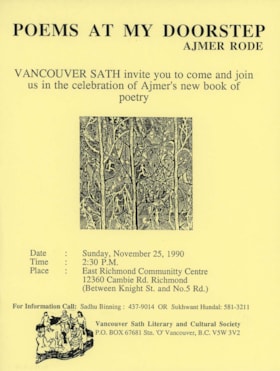
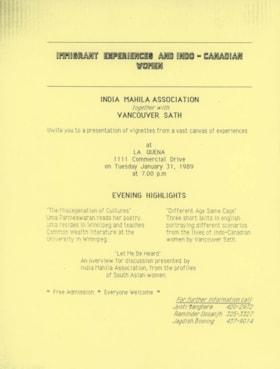
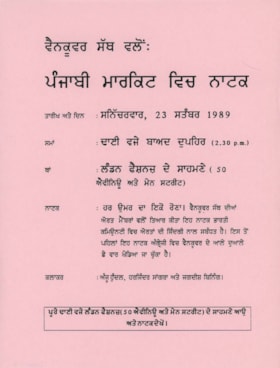
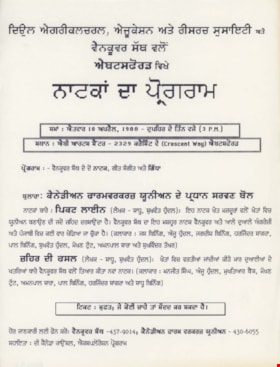
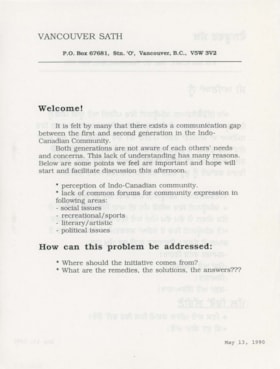
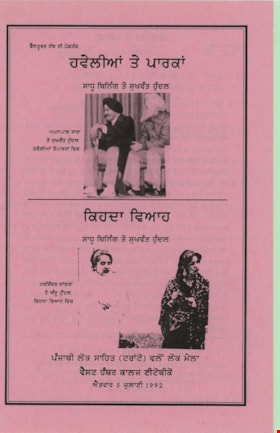
![Interview with Kanwal Singh Neel, [1973-2023] (interview content), interviewed 5 Jul. 2023 thumbnail](/media/hpo/_Data/_BVM_Sound_Recordings/Oral_Histories/2023_0016_0011_002.jpg?width=280)
![Interview with Lama Tenzin Sherpa and Lama Sue Salter, [1977-2023] (interview content), interviewed 31 Jul. 2023 thumbnail](/media/hpo/_Data/_BVM_Sound_Recordings/Oral_Histories/2023_0016_0015_003.jpeg?width=280)

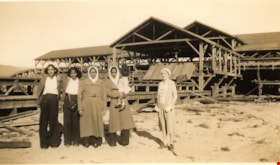
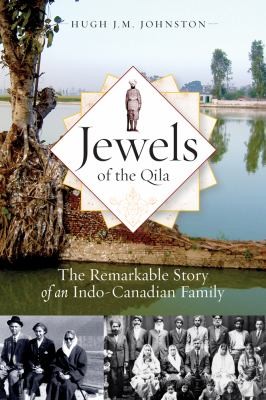
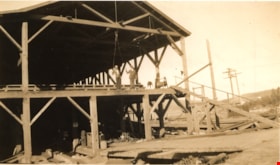
![Kapoor Sawmills Limited and living quarters, [1945] (date of original), copied 2004 thumbnail](/media/hpo/_Data/_BVM_Images/2019/2019_0032_0010_001.jpg?width=280)
![Kapoor Sawmills Limited, cabins and log booms, [195-] (date of original), copied 2004 thumbnail](/media/hpo/_Data/_BVM_Images/2019/2019_0032_0009_001.jpg?width=280)
